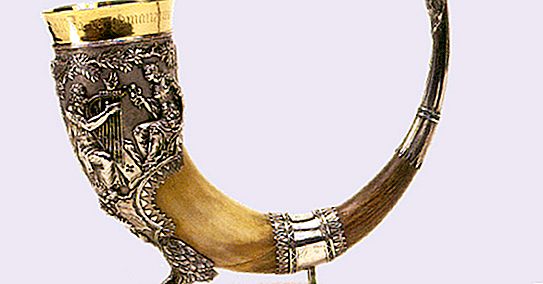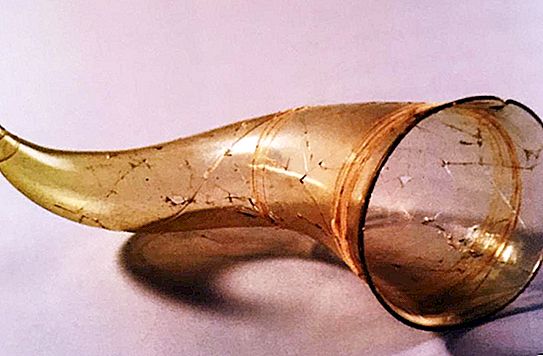A vessel in the form of a horn has a long history, which began even before our era, but not at once and not in one place. Mention of him is even in the Bible. Of course, the first of these glasses did not just have the shape of a curved cone, but were actually made from natural animal horns. The idea to use what is always at hand to create beautiful and comfortable cups came to representatives of different tribes and peoples. Therefore, the name of the vessel in the form of a horn depends on the place where it is made and used.
Rieton
The most famous name for the horn-shaped goblet has ancient Greek roots. In the ancient world, such vessels for drinking, made from the horns of ungulate mammals, as well as clay, metal, repeating their shape, were used mainly for wine and were decorated depending on the status and wealth of the owner. To know at feasts, enjoyed drinks from the horns of tours or bison, delicately framed by precious metals and stones. A frequent plot of engravings were images of gods, especially those who patronize winemaking and fun.

Warriors used goblets from the horns of less noble animals - rams, bulls. Accordingly, their decoration was limited to simple carvings, parts from inexpensive metals, or none at all.
Cups from horns were an integral part of the life of many ancient warlike nomadic tribes - Celtic, Thracian, Germanic, Scythian. Most archaeological finds have been made between Asia and Europe, in the territories adjacent to the Black and Caspian Sea.
The popularity of such glasses did not pass century after century, and the vessel in the shape of a horn began to be made of glass, leather, and later - of plastic, acquiring new functional details - a lid, an attachment (from laces to metal devices), a stand. The production of horn cups is still ongoing, although the peak of folk love came, of course, in the 70s of the last century.





